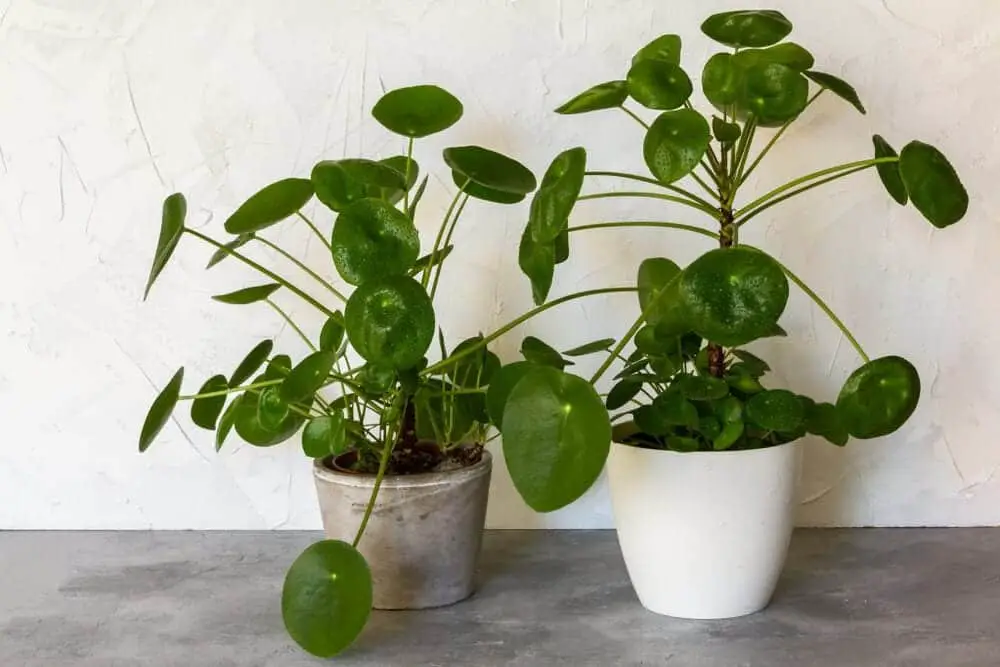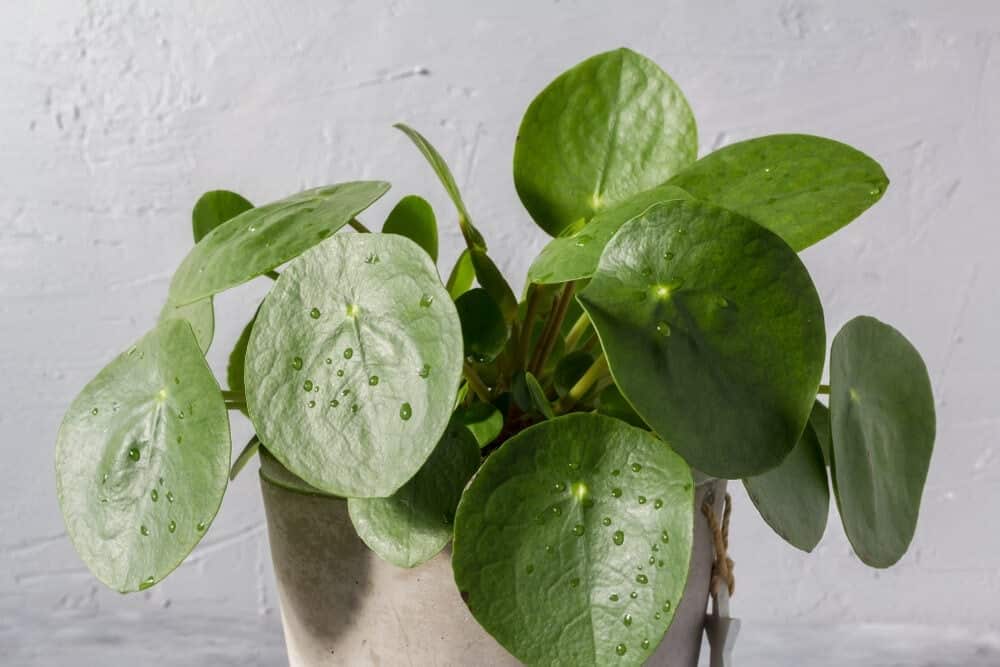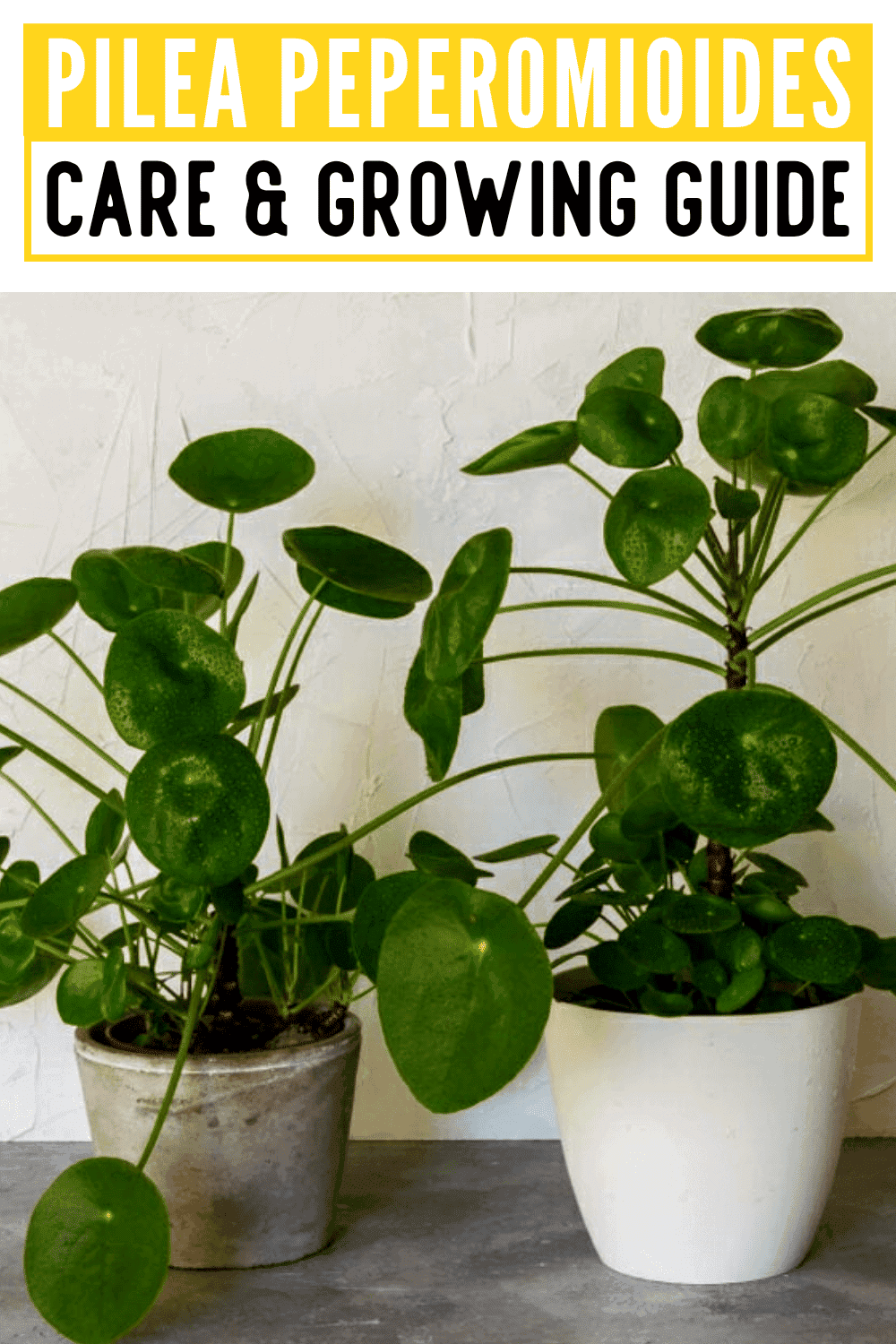How cool would it be to say you have a pancake or money tree plant? These are two of the names that the Pilea Peperomioides is also known by.
This plant is easy and simple to care for and propagate for anyone; from a newbie gardener to a pro. It got its name because of the leaves, which are round, flat, and coin-shaped. It is one of the most popular indoor plants today.
Pilea Peperomioides Care & Growing Guide
1. Light Requirement
The light needed for the Pilea Peperomioides is one thing about raising them that is essential that you get correct. Upon closer inspection of the plant, you will see thick stems and tough waxy leaves. These indicate that they will cope with some direct sunlight or strong bright light.
If you increase the light level rapidly after being in low light, burn spots on the leaves can occur. If you try to grow this plant in low light conditions, they will suffer, causing the leaves to curl and bend instead of staying flat but too much light will cause the leaves to have a washed-out appearance and have a purple hue. Move the plant gradually to get it used to the changing light.
2. Water
This is a plant that wants to be watered thoroughly and then left alone until the soil is almost dried out before you need to water it again. When the light levels are good and you have a warm temperature you may have to water it a few times a week. In cooler weather or winter, you will need to water fewer times.
If the soil gets too dry or too wet, the Pilea Peperomioides will have a droopy look. This is because the stems are losing their strength, causing everything to droop. Check the soil to see if it is too wet or dry before you add any water or it needs to dry out more.
3. Climate
This should be grown in USDA zone 10
4. Soil
The soil can be an all-purpose potting mix. Check the label to be sure it is for garden or houseplants. Make sure that there is good drainage but on the other hand, it still drinks plenty of water. Avoid using porous soil mixes or you will be watering it daily.
5. Temperature
The temperature for proper growth needs to 55 degrees Fahrenheit or higher. The ideal temperature should be between 60-70 degrees Fahrenheit

6. Repotting
The Pilea Peperomioides need space to grow so they will frequently outgrow their pots. This happens when the plant has produced so many offsets or the plant has grown larger. In the beginning, when it starts to grow it may be to be repotted twice in a year but afterward, it may only need to do it once a year.
7. Speed of Growth
When growing new plants, the new roots will appear in a few short weeks, and once planted, it will take another few weeks for them to grow into a nice plant. As stated, they do grow fast, but how fast will depend on the growing conditions. You can expect the Pilea Peperomioides to double in size every year. A very young plant may triple in size during the first year.
8. Height and Spread
Most prefer to have their plants to a small to medium size. If you allow the plant to grow, they can become very tall. The main plant does not spread out that much, but the young offsets can give the plant a wider, fuller look if they are not thinned out.
The long stems can grow to 12 inches long with leaves that can measure up to four inches in diameter.
9. Flowers
This is a plant that is mostly grown for its unusual looking leaves, but not for any blooms that it will produce occasionally. A mature Pilea Peperomioides that is well grown will give you some flowers eventually. They do not smell and are unremarkable. The flowers are tiny white flower clusters with pink stems.
10. Trimming
Trimming them will give them a bushier look. Trim off the top stems when they are too long. After a bud, pinch off the young shoots to make their bushier. Also, get rid of the decaying or dead leaves and stems

Is Pilea Peperomioides Poisonous?
This is a plant that is safe to have around pets and humans.
Can Pilea Peperomioides grow in Water?
You can start the offset in a container of water to start new plants. Just be sure that the stem is submerged and the growth is above the water level.
More like this: Strawflower Care & Growing Guide
How to get Pilea Peperomioides to Flower?
Normally they do not flower and when they do, the flowers have no scent and are not appealing to look at.
Common Pilea Peperomioides Plant Diseases
These plants are prone to a variety of diseases, including:
- Root rot or mold problems—this is due to cool temperatures, low light, and excessive humid. The leaves may also turn yellow. To fix this problem, move the plant to the right conditions.
- Yellow leaves—allowing the container to sit in water or not being fertilized for a long period of time or heavily overwatered.
- Black/brown spots—can be caused by Aphids or Thrips, which can be wiped off with a cotton ball with 70% rubbing alcohol on it.
- Fungal disease—this is can be caused by environmental conditions. All you need to do is remove the affected leaf.
Also read:
Conclusion
- A Pilea Peperomioides will not grow straight up unless you provide bright light from above, such as a grow light or overhead skylight.
- Rotate your plant every week one quarter a turn to prevent the leaves from facing the window and the central stem from leaning toward the source of light.
- It is not a houseplant that will thrive in kitchens or dank bathrooms.
- They need to be fed occasionally; once a month you should use a cacti or houseplant based fertilizer.
- The Pilea Peperomioides can be grown to have a tall, straight look, a full compact look, or a one-sided face look.
- Avoid very dark areas, or prolonged intense early afternoon and midday sun.

Victoria is the owner and main author of hobby plants. She loves spending her free time in her garden planting and taking care of her plants. Victoria hopes you enjoy the content here!
![Queen Of The Night Flower [Complete Plant Care Guide] Queen Of The Night Flower [Complete Plant Care Guide]](https://www.hobbyplants.com/wp-content/uploads/2022/07/queen-of-the-night-flower-300x158.jpg)
![Mother Of Thousands Plant [Complete Plant Care Guide] Mother Of Thousands Plant [Complete Plant Care Guide]](https://www.hobbyplants.com/wp-content/uploads/2022/07/mother-of-thousands-plant-300x158.jpg)
![How Often Should You Water Pothos? [Complete Care Guide] How Often Should You Water Pothos? [Complete Care Guide]](https://www.hobbyplants.com/wp-content/uploads/2022/07/how-often-to-water-pothos-300x158.jpg)
![Can Snake Plants Live Outside? [COMPLETE CARE GUIDE] Can Snake Plants Live Outside? [COMPLETE CARE GUIDE]](https://www.hobbyplants.com/wp-content/uploads/2022/08/can-snake-plants-live-outside-300x158.jpg)
![Majesty Palm Plant Care: [Complete Beginner's Guide] Majesty Palm Plant Care: [Complete Beginner's Guide]](https://www.hobbyplants.com/wp-content/uploads/2022/08/majesty-palm-care-300x158.jpg)
![Exotic Angel Plant Care: [Complete Beginner's Guide] Exotic Angel Plant Care: [Complete Beginner's Guide]](https://www.hobbyplants.com/wp-content/uploads/2022/08/exotic-angel-plant-care-300x158.jpg)
![Do Coleus Like Sun Or Shade: [Complete Care Guide] Do Coleus Like Sun Or Shade: [Complete Care Guide]](https://www.hobbyplants.com/wp-content/uploads/2022/08/coleus-sun-or-shade-300x158.jpg)
![Snow White Waffle Plant: [Complete Care Guide] Snow White Waffle Plant: [Complete Care Guide]](https://www.hobbyplants.com/wp-content/uploads/2022/08/snow-white-waffle-plant-300x158.jpg)
![Waffle Plant Care: [Complete Beginner's Guide] Waffle Plant Care: [Complete Beginner's Guide]](https://www.hobbyplants.com/wp-content/uploads/2022/08/waffle-plant-300x158.jpg)
![Bird Of Paradise Plant Care: [Complete Beginner's Guide] Bird Of Paradise Plant Care: [Complete Beginner's Guide]](https://www.hobbyplants.com/wp-content/uploads/2022/08/bird-of-paradise-plant-300x158.jpg)
![Purple Passion Plant Care: [Complete Beginner's Guide] Purple Passion Plant Care: [Complete Beginner's Guide]](https://www.hobbyplants.com/wp-content/uploads/2022/08/purple-passion-plant-care-300x158.jpg)
![China Doll Plant Care: [Complete Beginner's Guide] China Doll Plant Care: [Complete Beginner's Guide]](https://www.hobbyplants.com/wp-content/uploads/2022/09/china-doll-plant-care-300x158.jpg)